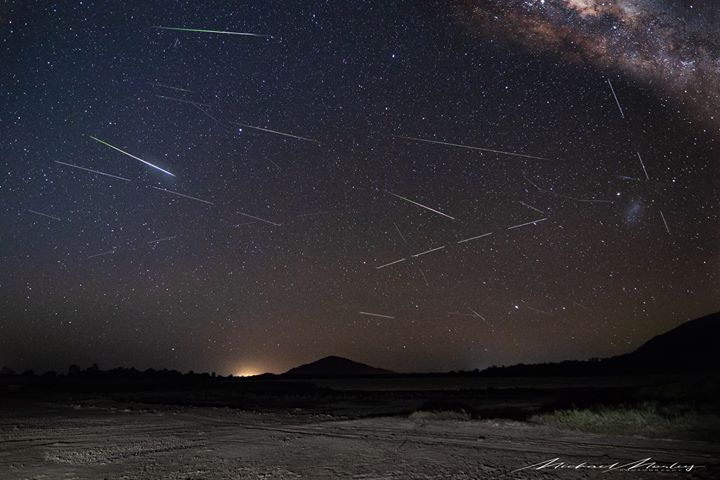Recently, sky-lovers, star gazers and astronomy enthusiasts – yes, those who love to take pictures of the moon are included too, have been blessed with cool celestial events.
We had the Harvest Moon, the “no-shadow” day, the Solar Eclipse on 8 Apr 2024 and the supermoon on 24 Apr.
Now, we can enjoy the Eta Aquarids Meteor Shower coming this May. Here is everything you need to know.
What is Eta Aquarids?
According to the National Aeronautics and Space Administration (NASA), the Eta Aquarids meteors are leftover particles from Halley’s Comet and “bits from broken asteroids” that are known for travelling very fast (about 66km per second).
Every year, typically in May, the Earth passes through a dusty trail of debris left by the moving bits of broken matter and they will collide with the Earth’s atmosphere.
The collision with our atmosphere, because it’s travelling so fast, will lead to the bits disintegrating – lending it is fiery, streaky look in the sky.

According to Time and Date, the Eta Aquarids got its name from the brightest star in the constellation of Aquarius: Eta Aquarii.
What Can We Expect?
The Singapore Science Centre Observatory (SCOB) told news outlets that we have a good chance of viewing the meteor shower from around 5 to 6 May 2024.

It is considered an “above average” shower in that we can potentially see a lot of movement and colour, thanks to the new moon phase we’re in.
During new moon, the moon is positioned between the Earth and the Sun and its dark side is facing us. This means that the moon is invisible to see from Earth and the sky will appear particularly darker than usual.
With the sky acting like a black canvas, the meteor shower is expected to be more visible. During the peak of the shower, about 60 meteors can be seen per hour.
SCOB also mentioned that Eta Aquarids is more visible to those in the Southern Hemisphere.
Viewing Tips
SCOB said that to get the best view, head down to a dark location after midnight.
It’s even better when there is minimal interference from sources of light pollution such as streetlamps and buildings.
However, they warned that with any celestial event, bad weather and big clouds can potentially block your view. Most importantly, take necessary safety precautions when looking at the sky late at night, especially for those planning to go alone.
Next, Supermoons
According to experts from EarthSky, we can expect a whopping four full supermoons in 2024, back-to-back starting from August to November.
Supermoons got their name from the significantly noticeable difference from normal moons in terms of size and brightness. Because the moon gets close to Earth sometime in its orbit, the moon will appear up to 8% bigger and 15% brighter than the average moon.
Until then, make some plans to appreciate the night sky and make a wish on the Eta Aquarids.




